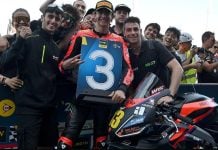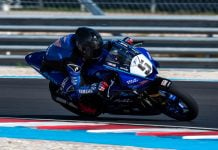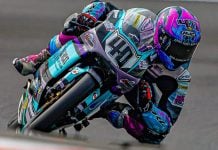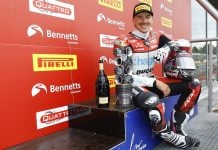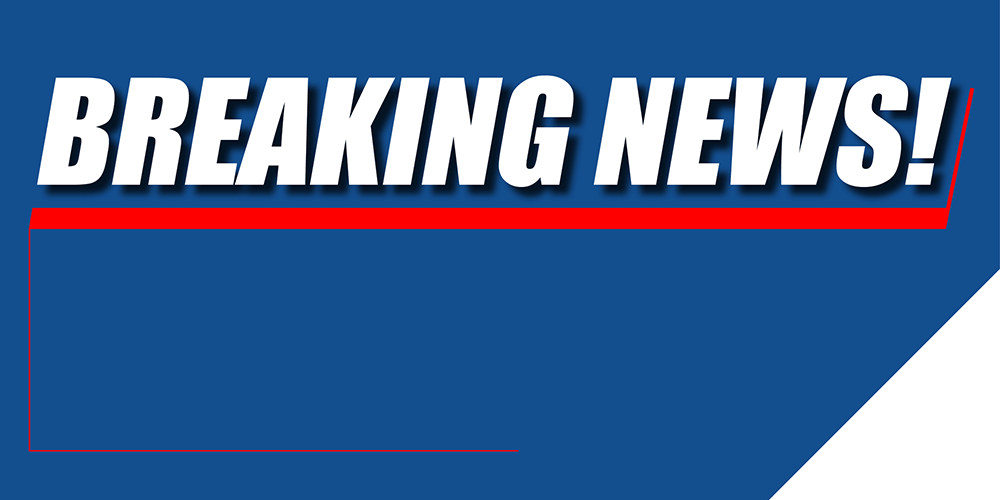By Glenn LeSanto
Regular World Superbike rider Ben Bostrom recorded the fastest time in Friday’s qualifying session at Laguna Seca, just beating his brother Eric Bostrom to the top spot. Eric spent most of the session at the head of the time sheet but as the session drew to a close Ben Bostrom on the L&M Ducati pulled himself up to provisional pole. Then, with only a minute left on the clock, Eric Bostrom put his Kawasaki Motorsports ZX-7R back in front–only to see his brother Ben put in a faster time on his very last lap. Ben Bostrom finished just a few tenths of a second faster than his brother with a fastest lap of 1:25.248 compared to Eric’s 1:25.556. The pair’s lap times
were half-a-second faster than the rest of the pack, with Ben’s time being three-quarters-of-a-second faster than third-fastest Troy Bayliss. Laguna Seca is used as a test track by Dunlop so it was no surprise to see two Dunlop riders on the top of the time sheet and a total of eight Dunlop users in the top 10.
Third-fastest man Bayliss on the Infostrada Ducati had spent much of the session languishing way down the order. But with the clock ticking down the final seconds he got out on the track to put himself onto the provisional front row with a lap at 1:26.075. Colin Edwards was fourth-fastest on the Castrol Honda. Both Bayliss and Edwards run Michelin tyres. British rider Neil Hodgson (GSE Ducati) had spent most of the session on the provisional front row, only to be demoted down to fifth as the session drew to a close.
Troy Corser, the subject of much speculation recently in the Italian press regarding his recent drop-off in form, finished the session sixth-fastest on the Axo Aprilia.
World Superbike Qualifying Session #1 Results:
1. Ben Bostrom, Ducati, 1:25.248
2. Eric Bostrom, Kawasaki, 1:25.556
3. Troy Bayliss, Ducati, 1:26.075
4. Colin Edwards II, Honda, 1:26.112
5. Neil Hodgson, Ducati, 1:26.163
6. Troy Corser, Aprilia, 1:26.235
7. Doug Chandler, Kawasaki, 1:26.287
8. Pierfrancesco Chili, Suzuki, 1:26.539
9. Regis Laconi, Aprilia, 1:26.605
10. James Toseland, Ducati, 1:26.612
11. Stephane Chambon, Suzuki, 1:26.779
12. Gregorio Lavilla, Kawasaki, 1:26.985
13. Tadayuki Okada, Honda, 1:27.031
14. Ruben Xaus, Ducati, 1:27.050
15. Steve Martin, Ducati, 1:27.134
16. Lucio Pedercini, Ducati, 1:27.192
17. Akira Yanagawa, Kawasaki, 1:27.372
18. Robert Ulm, Ducati, 1:27.415
19. Giovanni Bussei, Ducati, 1:27.437
20. Marco Borciani, Ducati, 1:27.507
21. Peter Goddard, Benelli, 1:27.550
Ruben Xaus crashed unhurt in turn two in the second half of the qualifying session.
Ten of the top 12 qualifiers were on Dunlops with only Colin Edwards and Troy Bayliss on Michelin.
Troy Corser recorded the highest trap speed (by 7 kph over the next fastest bike) at 246 kph, or 152 mph, on the front straight.


